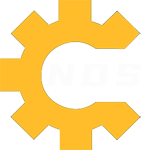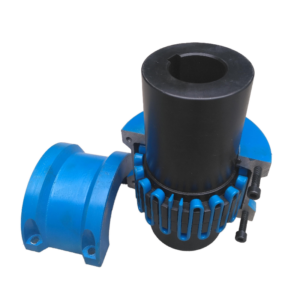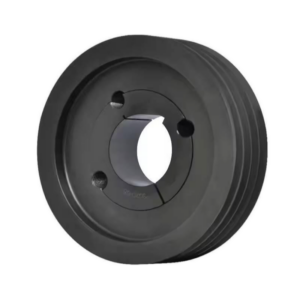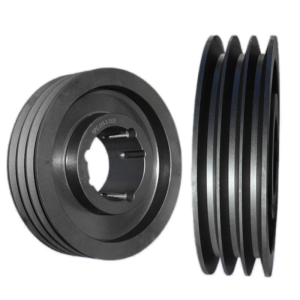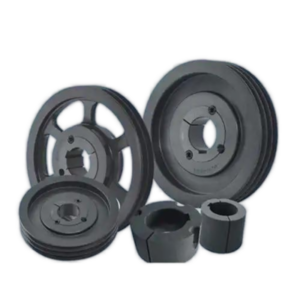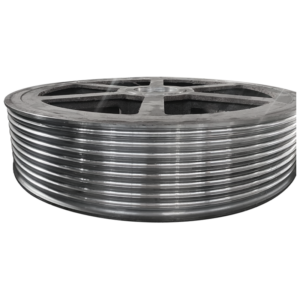In the world of power transmission, selecting the right coupling is critical for the efficiency, reliability, and longevity of machinery. Two prevalent types of couplings used in industrial applications are the Jaw Flexure Coupling (often referred to as a Spider or Elastomeric Coupling) and the Gear Coupling. While both serve the fundamental purpose of connecting two shafts to transmit torque, their design principles, performance characteristics, and ideal applications differ significantly.
Jaw Flexure Couplings: The Flexible Power Transmitter
Design Principle:
A jaw coupling consists of two metal hubs with interlocking jaws. An elastomeric spider (typically made of NBR, polyurethane, or Hytrel) is inserted between these jaws, providing the flexibility and damping.
Key Characteristics & Ideal Applications:
- Misalignment Compensation: Excellent at accommodating angular misalignment and parallel misalignment to a moderate degree. However, they are generally not suitable for large parallel offset or axial movement.
- Vibration Damping and Shock Absorption: The elastomeric spider is the star of the show here. It absorbs torsional vibrations and dampens shock loads, protecting both the driving and driven equipment (e.g., motors, pumps, conveyors) from damaging peak torques.
- Primary Applications: Perfect for general-purpose drives where some misalignment and vibration are present.
- Examples: Pumps, fans, compressors, conveyor systems, and applications involving servo motors and precision positioning systems. Their simplicity and zero-backlash nature (in many designs) make them a top choice for motion control applications.
- Maintenance: They are generally maintenance-free as the elastomeric element does not require lubrication. The spider is a consumable part designed to be replaced easily during maintenance downtime.
Gear Couplings: The High-Torque Workhorse
Design Principle:
A gear coupling consists of two identical hubs with external crown gear teeth. These hubs are enclosed in a sleeve (or two sleeves) with corresponding internal gear teeth. The entire assembly is filled with lubricant.
Key Characteristics & Ideal Applications:
- High Torque Density: Their all-metal, gear-tooth design allows them to transmit very high torques in a relatively compact package, offering an excellent torque-to-size ratio.
- Misalignment Compensation: Superior at accommodating all types of misalignment: angular, parallel, and axial. They can handle significantly greater parallel offset and axial movement compared to jaw couplings.
- Rigidity and Precision: While they can accommodate misalignment, the metal-on-metal contact (mediated by lubricant) provides high torsional stiffness. This is beneficial for applications requiring precise timing and synchronization without torsional wind-up, but they do not dampen vibration.
- Primary Applications: Designed for heavy-duty industrial environments with severe misalignment and high torque demands.
- Examples: Rolling mills, heavy-extrusion machines, large pumps, compressors, marine propulsion systems, steel processing equipment, and paper mills.
- Maintenance: Require periodic lubrication and sealing to prevent wear and corrosion of the internal gear teeth. This makes them less suitable for applications where maintenance access is difficult or undesirable.
Can They Be Used Interchangeably? The Question of Substitution
The short answer is: rarely, and only after careful consideration of the specific application requirements.
While both connect shafts, their core functionalities are distinct. Substituting one for the other can lead to premature failure or suboptimal performance.
Replacing a Gear Coupling with a Jaw Coupling is generally not advised for:
- High-Torque Applications: The jaw coupling’s elastomeric spider will likely overheat and fail under the continuous high torque a gear coupling is designed for.
- Significant Misalignment: A jaw coupling cannot handle the large parallel or axial movement a gear coupling can accommodate.
- Applications Requiring Torsional Stiffness: The elastic nature of the spider introduces compliance, which is undesirable in systems requiring precise phasing.
Replacing a Jaw Coupling with a Gear Coupling is generally not advised for:
- Applications Needing Vibration Damping: A gear coupling will transmit vibrations and shock loads directly through the system, potentially damaging sensitive components like encoders or bearings.
- Maintenance-Free Requirements: Introducing a gear coupling into a system not designed for periodic lubrication adds a significant maintenance burden.
- Precision Servo Applications: The slight backlash inherent in gear couplings (even “zero-backlash” designs have minimal play) can cause issues in closed-loop positioning systems, unlike truly zero-backlash jaw flexure couplings.
When might substitution be possible?
In some low-to-moderate torque applications with minimal misalignment, a high-performance jaw coupling might be considered as a maintenance-free alternative to a small gear coupling, provided its torque and misalignment capacity are thoroughly verified. Conversely, in a very harsh environment where misalignment is the primary concern and vibration is not an issue, a gear coupling might be chosen over a jaw type, accepting the maintenance trade-off.
Conclusion: A Matter of Philosophy
The choice between a jaw flexure coupling and a gear coupling is a fundamental one:
- Choose a Jaw Flexure Coupling when your priority is smooth operation, vibration damping, maintenance-free service, and precision in moderate-duty applications.
- Choose a Gear Coupling when your priority is transmitting very high torque, accommodating severe misalignment, and achieving high torsional stiffness in heavy-duty, industrial environments.
Understanding these core differences is essential. They are not universal substitutes but rather specialized tools, each engineered to excel in its own domain within the vast field of mechanical power transmission.
